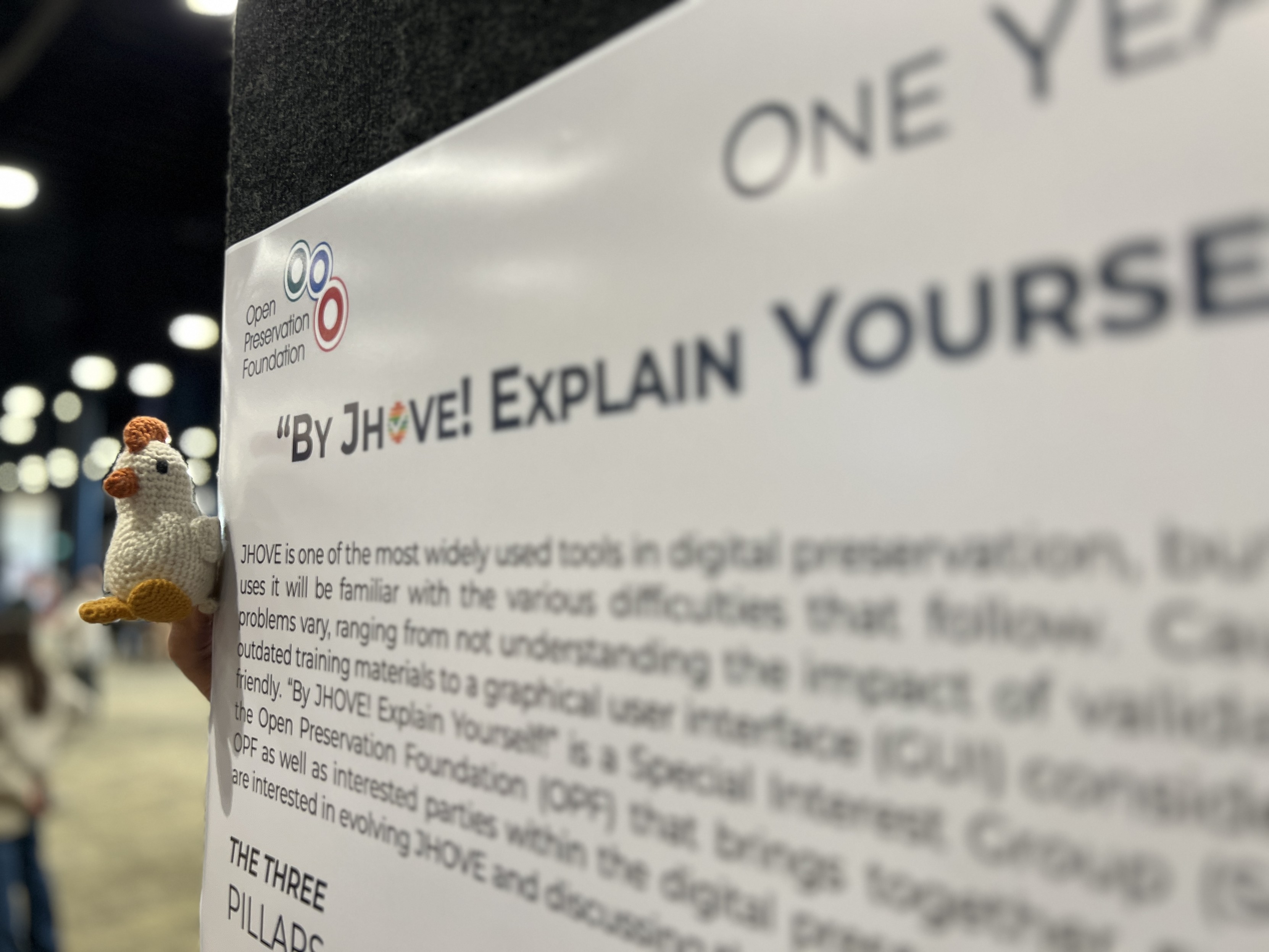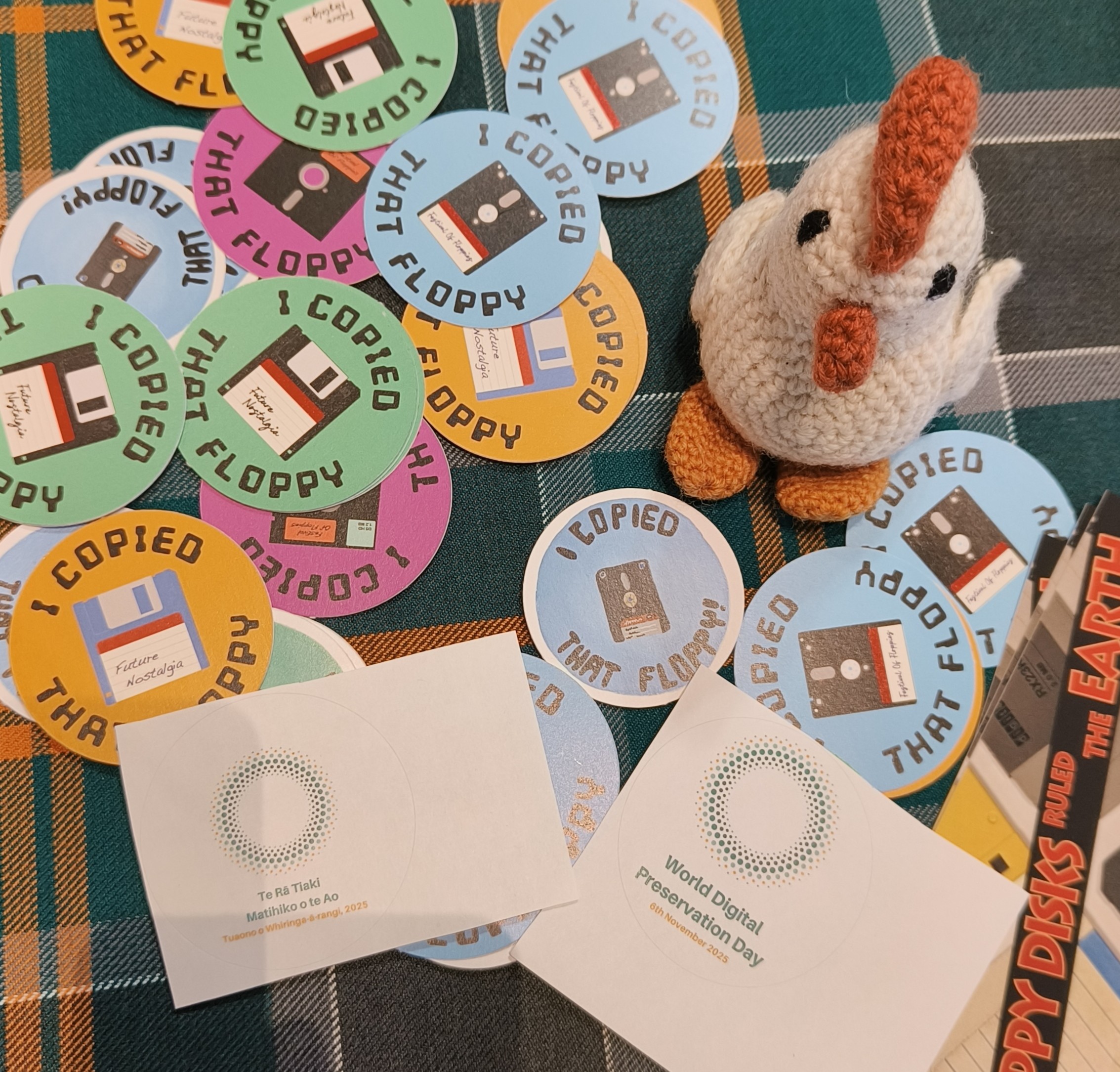New DigiPres.org request for feedback: Supporting local practitioner groups https://github.com/orgs/digipres/discussions/62 #digipres
New DigiPres.org request for feedback: Supporting local practitioner groups https://github.com/orgs/digipres/discussions/62 #digipres
I'm shocked. I transferred 310 GB of audiovisual files via SFTP to be ingested into Rosetta's long term storage, and habitually compared checksums. Turns out, 6 of the 3300 files don't match.
I knew not to trust a simple non-checksummed copy process, but I'm still quite amazed it actually happened. I wonder how? Aren't there supposed to be safeguards in TCP/IP and all that? #digipres
I'm shocked. I transferred 310 GB of audiovisual files via SFTP to be ingested into Rosetta's long term storage, and habitually compared checksums. Turns out, 6 of the 3300 files don't match.
I knew not to trust a simple non-checksummed copy process, but I'm still quite amazed it actually happened. I wonder how? Aren't there supposed to be safeguards in TCP/IP and all that? #digipres
I did it! Here's my post on @SafeguardingResearch #DataRescue and distributed #DigiPres for #WDPD2025! https://erambler.co.uk/blog/wdpd2025-data-rescue/
Shoutout to @lavaeolus & @jonny, plus @datarescueproject.org
https://youtu.be/qx1i0zBL0Ss?si=yyWjsVIAYSzdEPnb
Who wrote this? Was it me or ChatGPT? With iA Writer you see it at a glance. You got help. Now, dare to think for yourself. What do you feel? What do you want to say? What do you really mean? Write that.
I did it! Here's my post on @SafeguardingResearch #DataRescue and distributed #DigiPres for #WDPD2025! https://erambler.co.uk/blog/wdpd2025-data-rescue/
Shoutout to @lavaeolus & @jonny, plus @datarescueproject.org
Auf Initiative von @mickylindlar mein erster @tibhannover Blogbeitrag auf Deutsch, übersetzt und bearbeitet von meinem Kollegen Felix Burger.
Happy World Digital Preservation Day #WDPD2025 ! In addition to having wonderful #iPRES2025 in Wellington, NZ, thank you / kia ora also for Amos Rex art museum for hosting our team today in Finland. https://amosrex.fi/en/ #digipres
Does anybody know anything about deduplication at the #InternetArchive? Quite frequently people upload the same files as independent items, which could be prevented by checking against checksums.
See, for example, https://archive.org/details/Om-Alqura, which seems to be an exact copy of https://archive.org/details/1320_20220730
While I thoroughly enjoy the wealth of old Arabic periodicals on the Internet Archive, I am also frustrated by the state of metadata. Why do people laboriously upload thousands of individual issues but provide nothing but the **one-word** title? Don’t they want the material to be found? Is there something else to it?
Take, for example, https://archive.org/details/al-masrah_202408, which is the only known digitised copy of المسرح, published by محمد عبد المجيد حلمي in Cairo from 1925 onwards. https://www.wikidata.org/wiki/Q124972737
#DigitalHumanities peeps and #Librarians, can you recommend publications on the state of the Internet Archive’s crowd-sourced metadata?
#الصحافة_العربية #ArabPeriodicalStudies #digipres #metadata #periodicalStudies
Auf Initiative von @mickylindlar mein erster @tibhannover Blogbeitrag auf Deutsch, übersetzt und bearbeitet von meinem Kollegen Felix Burger.



